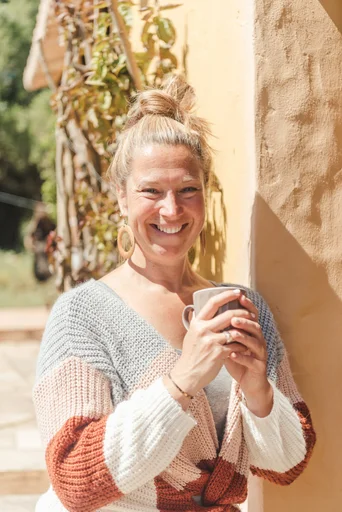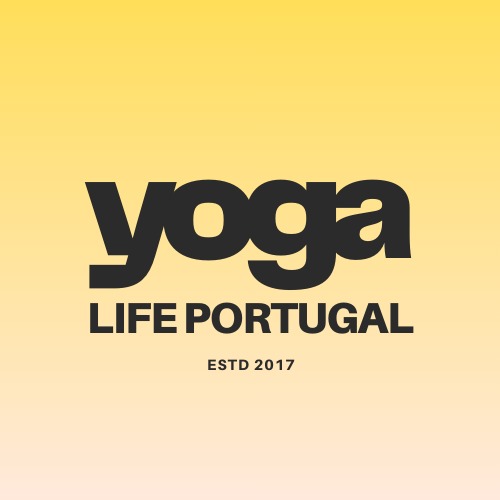A Chest-Opening and Backbending Sequence

Introduction to Chest-Opening and Backbending
In the practice of yoga, Chest-Opening and Backbending are essential components that offer a myriad of benefits for both the body and mind. Let's delve into the significance of these practices and explore how they contribute to overall well-being.
The Importance of Chest-Opening
Benefits for Your Body and Mind
Chest-opening poses in yoga play a crucial role in releasing tension, improving posture, and enhancing emotional well-being. By incorporating chest-opening postures into your practice, you can experience relief from anxiety and stress, emotional freedom, spinal healing, improved posture, alleviation of back and neck pain, invigoration, strengthening, stimulation of the Heart chakra, increased body awareness, uplifting of the spirit, improvement in cardiovascular health, as well as science-backed benefits of spinal extension. These poses counteract the effects of bad posture by opening up the body and helping individuals face their fears. Additionally, they provide intense multiple benefits that contribute to an overall sense of physical and emotional wellness.
The Role of Backbending in Yoga
Strengthening and Flexibility
Backbending is a fundamental aspect of yoga that focuses on spinal extension and flexibility. This practice helps alleviate lower back pain while improving strength and flexibility. It also contributes to increasing body awareness and infusing the mind with joy. By engaging in backbending poses, individuals can experience relief from anxiety and stress while counteracting the effects of poor posture. Furthermore, backbending poses are invigorating to both the body and spirit.
Preparing Your Body for the Sequence
Before diving into the invigorating chest-opening and backbending sequence, it's essential to prepare your body through warm-up exercises and setting intentions for your practice. These initial steps not only help in preventing injuries but also enhance the overall experience of the yoga session.
Warm-Up Exercises
Gentle Stretches to Loosen the Spine
To kickstart your practice, begin with gentle stretches that focus on loosening the spine. Incorporate movements such as spinal twists, cat-cow stretches, and seated side bends. These stretches not only release tension in the back but also promote flexibility and mobility in the spine. As you flow through these movements, pay attention to your breath, allowing it to guide each stretch and deepen your connection with your body.
Breathing Techniques for Relaxation
In addition to physical warm-up exercises, integrating breathing techniques is crucial for relaxation and mental preparation. Practice deep diaphragmatic breathing by inhaling deeply through your nose, feeling your belly expand, and exhaling slowly through your mouth. This technique calms the nervous system, reduces stress, and prepares both the body and mind for a deeper yoga practice.
Personal Experience:
After incorporating these warm-up exercises into my routine, I noticed a significant improvement in my overall flexibility and reduced muscle tension.
Author's Insight:
By focusing on gentle stretches and conscious breathing at the beginning of each practice, you can create a foundation of ease and openness within your body.
Setting Intentions for Your Practice
Focusing Your Mind for Better Results
Setting intentions before beginning the sequence allows you to align your mind with your physical movements. Take a few moments to reflect on what you hope to achieve during this practice – whether it's finding inner peace, building strength, or simply dedicating time to self-care. By consciously setting an intention, you infuse purpose into every pose and transition throughout the sequence.
Personal Experience:
Reflecting on my intentions has helped me cultivate a sense of mindfulness during my yoga sessions while enhancing my ability to stay present in each moment.
Lessons Learned:
Practicing with intention has allowed me to carry the benefits of yoga beyond the mat and into various aspects of my daily life.
As you engage in these preparatory steps, remember that they serve as an integral part of your yoga journey – nurturing both body and mind as you embark on this transformative sequence.
The Chest-Opening and Backbending Sequence

Now that you have prepared your body and set your intentions, it's time to embark on the invigorating Chest-Opening and Backbending sequence. This sequence is designed to enhance flexibility, strengthen the back, and uplift the spirit through a series of carefully curated poses.
Step-by-Step Guide to the Sequence
Starting Poses for Chest-Opening
Begin the sequence with gentle chest-opening poses to gradually awaken and stretch the muscles in the upper body. Start in a comfortable seated position and bring your hands behind you, interlacing your fingers and lifting your chest towards the sky. Hold this pose for a few breaths, feeling the expansion in your chest and the release of tension in your shoulders.
Transition into Cobra Pose by lying on your stomach, placing your palms under your shoulders, and gently lifting your chest off the ground while keeping your elbows close to your body. Feel the stretch across the front of your torso as you breathe deeply into this pose.
Progressing into Backbending Poses
As you move into backbending poses, begin with Bridge Pose. Lie on your back with knees bent and feet hip-width apart. Press into your feet as you lift your hips towards the sky, creating a gentle arch in your lower back. This pose not only opens up the chest but also strengthens the back muscles.
Transition from Bridge Pose into Wheel Pose, an advanced backbend that requires strength and flexibility. From a supine position, place your hands beside your head with fingers pointing towards your shoulders. Press into your palms and feet as you lift yourself up into a full backbend, feeling an exhilarating stretch across the entire front side of your body.
Modifications and Adjustments
Adapting the Sequence for Beginners
For those new to chest-opening and backbending poses, it's important to approach these postures with patience and mindfulness. Start with gentle variations of each pose, such as using props like blocks or bolsters for added support. Focus on proper alignment and listen to your body's signals to avoid overexertion.
Challenges for Advanced Practitioners
Advanced practitioners may find themselves exploring deeper variations of these poses or holding them for longer durations. Experiment with different arm variations in Wheel Pose or explore deeper expressions of Cobra Pose by lifting higher while maintaining stability in the lower body.
Incorporating these modifications allows practitioners at all levels to experience the benefits of chest-opening and backbending while honoring their individual capabilities.
Testimonials:
Anonymous: "Backbends are invigorating and strengthening."
Anonymous: "The practice of backbends is uplifting to the spirit and infuses the mind with joy."
By following this step-by-step guide and embracing modifications based on individual needs, practitioners can cultivate a fulfilling experience within their yoga practice while reaping numerous benefits for both body and mind.
Tips for Deepening Your Practice
As you continue to evolve in your yoga journey, incorporating props and refining your breathing and focus techniques can elevate your practice to new heights. These tips offer valuable support in deepening your chest-opening and backbending sequence, allowing you to explore the full potential of each posture.
Incorporating Props for Support
Using Blocks, Straps, and Bolsters
Yoga props are invaluable tools that provide stability, alignment, and accessibility in various poses. Whether you're a beginner or an experienced practitioner, these props offer the space to explore and enhance your practice without pushing beyond your limits.
Expert Testimony:
Yoga Shop: "Yoga accessories help you deepen postures and take your practice to the next level. Whether it's using a block to improve your balance or a yoga strap to go deeper into stretches, these props give you the space to explore and push your own limits, without forcing them."
For beginners, blocks can be used to make poses more accessible by providing additional height or support. They are particularly beneficial in standing poses such as Triangle Pose or Half Moon Pose, where they assist in maintaining proper alignment while gradually increasing flexibility.
Straps are excellent aids for deepening stretches and improving flexibility. They allow you to extend your reach in seated forward folds or bind poses with greater ease. Additionally, straps can be utilized to refine alignment in shoulder-opening postures like Cow Face Pose or Gomukhasana.
Bolsters play a crucial role in restorative practices by providing comfort and relaxation during longer holds. Placing bolsters under the back during supported backbends offers gentle elevation and support, allowing practitioners to sink deeper into the pose while maintaining ease.
Whether it's finding stability through blocks, extending reach with straps, or experiencing comfort with bolsters, these props serve as companions on your yoga journey – guiding you towards a deeper understanding of each posture.
Breathing and Focus Techniques
Enhancing Your Practice Through Breath
Conscious breathing is an integral part of deepening any yoga practice. By focusing on breath awareness, practitioners can cultivate a sense of calmness while enhancing their physical performance.
Expert Testimony:
USA Today: "If you’re an experienced yogi, certain tools can help you reach new places—whether that means deeper stretches or more supported backbends."
During chest-opening poses such as Cobra Pose or Wheel Pose, emphasize deep inhalations that expand the chest cavity while exhaling slowly to release any tension held within the body. This deliberate breathwork not only enhances the effectiveness of the pose but also promotes relaxation and mental clarity.
Maintaining Focus and Concentration
Incorporating mindfulness techniques into your practice allows for a deeper connection between mind and body. As you move through each posture in the sequence, direct your attention towards physical sensations and breath rhythm. This focused awareness enables practitioners to stay present in the moment while fostering a deeper understanding of their body's capabilities.
By integrating these breathing and focus techniques into your practice alongside supportive props, you can enrich every aspect of your chest-opening and backbending sequence – unlocking new depths of strength, flexibility, and inner peace.
Wrapping Up
Reflecting on Your Practice
As you conclude this invigorating chest-opening and backbending sequence, take a moment to reflect on the profound changes that may have unfolded within your body and mind. The incorporation of these practices into your routine can yield long-term impacts that extend beyond the confines of your yoga mat.
Positive Impacts on Mind and Body: Through consistent engagement with chest-opening and backbending poses, practitioners often report a decrease in pain and an increase in flexibility. This not only contributes to physical well-being but also fosters a sense of mental clarity and emotional balance.
Quality of Sleep: Many individuals have experienced an improvement in sleep quality as a result of integrating these sequences into their daily routine. The release of tension from the body coupled with enhanced relaxation techniques has led to more restful and rejuvenating sleep patterns.
Development of Positive Personality Traits: Over time, practitioners have noticed the development of positive personality traits such as increased self-esteem, improved coping mechanisms for anxiety and stress, and an overall uplifted spirit. These transformations speak volumes about the holistic impact of yoga on one's well-being.
Continuing Your Yoga Journey
As you continue on your yoga journey, consider incorporating the techniques learned from this sequence into your daily practice. Embracing these practices consistently can lead to a deeper understanding of your body's capabilities and further enhance your overall well-being.
Long-Term Benefits: Science-backed benefits such as spinal extension, improvement in cardiovascular health, increased body awareness, body satisfaction, positive body image, and self-esteem are all compelling reasons to integrate chest-opening and backbending into your regular routine.
Incorporating these practices into your daily life not only nurtures physical strength but also cultivates a profound connection between mind, body, and spirit. As you move forward on this transformative path, may you continue to experience the countless rewards that stem from embracing the art of yoga.
In conclusion, by immersing yourself in the enriching practice of chest-opening and backbending sequences, you open doors to holistic well-being – nurturing both physical vitality and inner harmony.
Remember, each breath taken during these sequences serves as a reminder that every moment is an opportunity for growth – both on and off the mat.
See Also
Spring Equilibrium: A Yin Yoga Flow for Balance - Yoga Journal
Truthful Yoga Flow: Asana, Chant, Gesture, Contemplation | Yamas + Niyamas
Mastering Iyengar: Achieving Stability in Handstand with Carrie Owerko
We bring back the importance of initiation into womanhood by Roos-Veerle Krijnen & Ella-June Henrard
Welcome to the Women’s Initiation Retreat by Naked Truth Retreats, a transformative journey into the depths of your True Feminine Nature. This retreat, scheduled from 17th to 24th August 2024 in Portugal, invites you to remember the sacredness and wholeness of your being.
Roos-Veerle Krijnen & Ella-June Henrard



